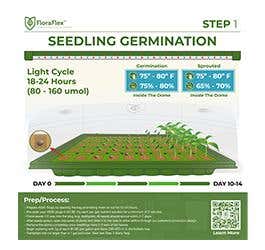Understanding Cannabis Concentrates
Cannabis concentrates are products that have been extracted from the cannabis plant to isolate and concentrate the desirable compounds, such as THC (tetrahydrocannabinol) and CBD (cannabidiol). Concentrates come in various forms, including oils, wax, shatter, budder, and live resin. These products are known for their high potency and can be consumed through various methods, such as vaporization, dabbing, or adding to edibles.
Extraction Methods for Cannabis Concentrates
-
Solvent-based Extraction: This method involves using solvents, such as butane, propane, or ethanol, to dissolve the cannabinoids and terpenes from the plant material. The solvent is then evaporated, leaving behind a concentrated extract. Common solvent-based extraction techniques include butane hash oil (BHO), propane hash oil (PHO), and ethanol extraction.
-
Supercritical CO2 Extraction: Supercritical CO2 extraction uses carbon dioxide in a supercritical state (between a liquid and a gas) to extract cannabinoids and terpenes from the cannabis plant. This method is known for its efficiency and ability to produce high-quality concentrates. It is widely used in the industry for its clean and solvent-free nature.
-
Rosin Press Extraction: Rosin press extraction involves using heat and pressure to extract cannabinoids and terpenes from the cannabis plant material. This method is gaining popularity due to its simplicity and solvent-free nature. It can be performed using a rosin press machine, which applies heat and pressure to the plant material, resulting in a sticky, resinous extract.
-
Ice Water Extraction: Ice water extraction, also known as bubble hash, uses ice-cold water and agitation to separate the trichomes (resin glands) from the plant material. The mixture is filtered through screens or bags, and the collected resin is dried to produce a concentrate. This method is favored for its simplicity and ability to preserve terpenes.
-
Hydrocarbon Extraction: Hydrocarbon extraction involves using hydrocarbon solvents, such as propane or butane, to extract cannabinoids and terpenes from the cannabis plant. This method is known for its efficiency and ability to extract a wide range of compounds. However, it requires careful handling due to the flammability of the solvents.
Factors to Consider in Extraction
Several factors come into play when choosing an extraction method for cannabis concentrates:
-
Safety: Safety is paramount in the extraction process. It is crucial to follow proper safety protocols, especially when working with flammable solvents or high-pressure equipment.
-
Quality: Different extraction methods can yield varying levels of purity and quality. Factors such as temperature, pressure, and extraction time can influence the final product's characteristics.
-
Terpene Preservation: Some extraction methods are better at preserving the natural terpene profiles of the cannabis plant, which contribute to the aroma, flavor, and potential entourage effects of the concentrate.
-
Scalability: The scalability of an extraction method is an important consideration for commercial operations. Some methods may be better suited for small-scale production, while others can handle larger volumes.
-
Regulatory Compliance: Extraction methods must comply with local regulations and safety standards. It is crucial to be aware of any restrictions or requirements imposed by regulatory authorities.
Cannabis concentrates offer a potent and diverse consumption experience for cannabis enthusiasts. Understanding the different extraction methods allows consumers and producers to make informed choices based on safety, quality, and desired end products. Whether it's solvent-based extraction, CO2 extraction, rosin press extraction, ice water extraction, or hydrocarbon extraction, each method has its advantages and considerations. Exploring the world of cannabis concentrates provides an exciting glimpse into the evolving cannabis industry and the vast array of products available to consumers.
















